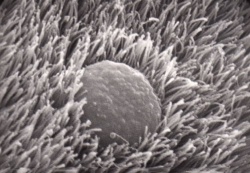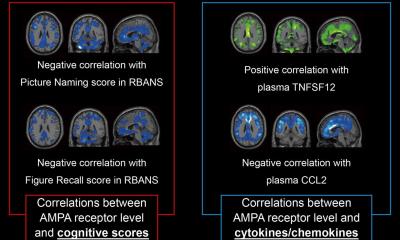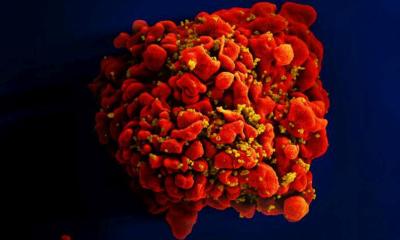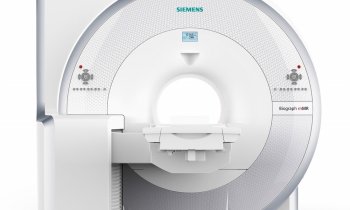Raman spectroscopy improves molecular imaging
A team of Stanford University School of Medicine researchers has developed a new type of imaging system that can illuminate tumors in living subjects-getting pictures with a precision of nearly one-trillionth of a meter.

This technique, called Raman spectroscopy, expands the available toolbox for the field of molecular imaging, said team leader Sanjiv Sam Gambhir, MD, PhD, professor of radiology. He is the senior author of a study describing the method that will be published in the March 31 advance online issue of the Proceedings of the National Academy of Sciences.
"This is an entirely new way of imaging living subjects, not based on anything previously used," said Gambhir, who directs the Molecular Imaging Program at Stanford. He said signals from Raman spectroscopy are stronger and longer-lived than other available methods, and the type of particles used in this method can transmit information about multiple types of molecular targets simultaneously.
"Usually we can measure one or two things at a time," he said. "With this, we can now likely see 10, 20, 30 things at once."
Gambhir said he believes this is the first time Raman spectroscopy has been used to image deep within the body, using tiny nanoparticles injected into the body to serve as beacons. When laser light is beamed from a source outside the body, these specialized particles emit signals that can be measured and converted into a visible indicator of their location in the body.
Gambhir compared the Raman spectroscopy work to the development of positron emission tomography discovered 20 or 30 years ago. PET has become a routine hospital imaging technique that uses radioactive molecules to generate a three-dimensional image of body biochemistry. "Nobody understood the impact of PET then," he said, referring to its discovery. "Ten or 15 years from now, people should appreciate the impact of this."
Imaging of animals and humans can be done using a few different methods, including PET, magnetic resonance imaging, computed tomography, optical bioluminescence and fluorescence and ultrasound. However, said Gambhir, none of these methods so far can fulfill all the desired qualities of an imaging tool, which include being able to finely detect small biochemical details, being able to detect more than one target at a time and being cheap and easy to use.
Gambhir's group turned to making good use of the Raman effect, the physical phenomenon that occurs when light from a source such as a laser is shined on an object. When the light hits the object, roughly one in 10 million photons bouncing off the object's molecules has an increase or decrease in energy-called Raman scattering. This scattering pattern, called a spectral fingerprint, is unique to each type of molecule and can be measured.
Postdoctoral scholars Shay Keren, PhD, and Cristina Zavaleta, PhD, co-first authors of the study, found a way to make Raman spectroscopy a medical tool. To get there, they used two types of engineered Raman nanoparticles: gold nanoparticles and single-wall carbon nanotubes.
First, they injected mice with the some of the nanoparticles. To see the nanoparticles, they used a special microscope that the group had adapted to view anesthetized mice exposed to laser light. The researchers could see that the nanoparticles migrated to the liver, where they were processed for excretion.
To be able to detect molecular events, said Zavaleta, they labeled separate batches of spectrally unique Raman nanoparticles with different "tags" - peptides or antibodies - and then injected them into the body simultaneously to see where they went. For example, if each type of particle migrated to a different tumor site, the newly developed Raman microscope would enable the researchers to separate the signals from each batch of particles.
As part of this proof-of-principle work, Gambhir's team tagged the gold nanoparticles with different pieces of proteins that homed in on different tumor molecules.
"We could attach pretty much anything," said Gambhir. The Raman effect also lasts indefinitely, so the particles don't lose effectiveness as indicators as long as they stay in the body.
Using a microscope they modified to detect Raman nanoparticles, the team was able to see targets on a scale 1,000 times smaller than what is now obtainable by the most precise fluorescence imaging using quantum dots.
When adapted for human use, they said, the technique has the potential to be useful during surgery, for example, in the removal of cancerous tissue. The extreme sensitivity of the imager could enable detection of even the most minute malignant tissues.
Gambhir's lab is further studying these Raman nanoparticles to follow their journey throughout the body over the course of several days before they are excreted. They are also optimizing the particle size and dosage, and are evaluating the particles for potential toxicity. Gambhir is publishing a study in the March 30 issue of Nature Nanotechnology indicating that the carbon nanotubes are not likely toxic in mice.
A clinical trial is planned to test the gold nanoparticles in humans for possible use in conjunction with a colonoscopy to indicate early-stage colorectal cancer.
02.04.2008







